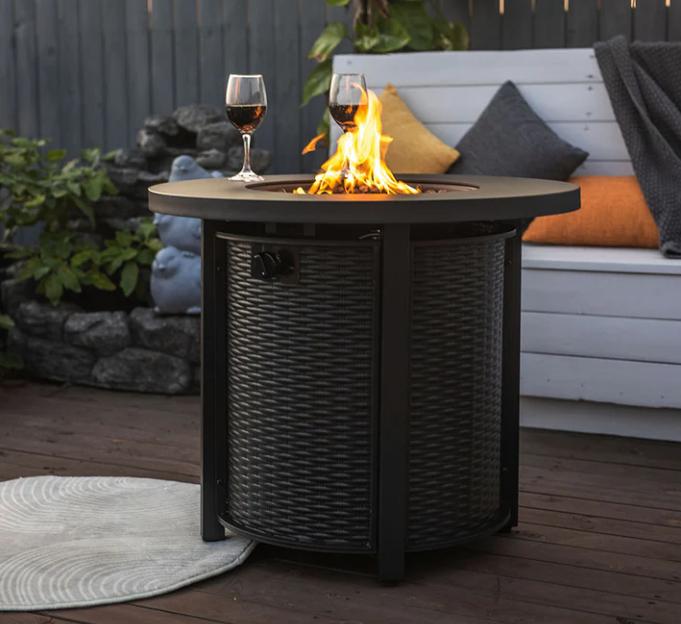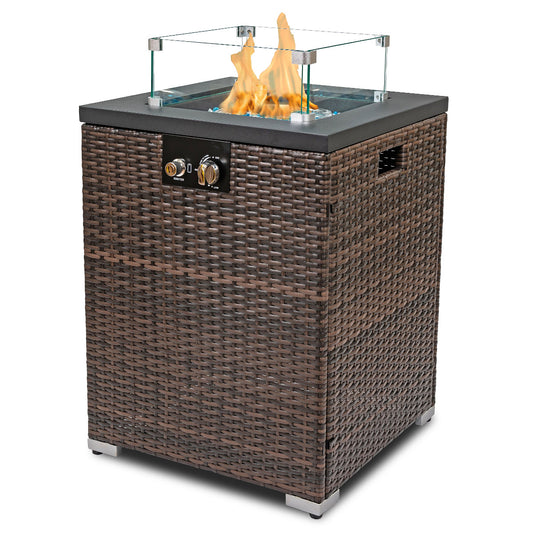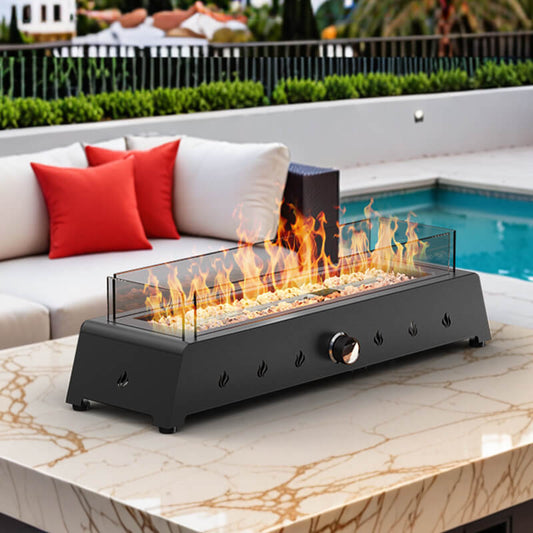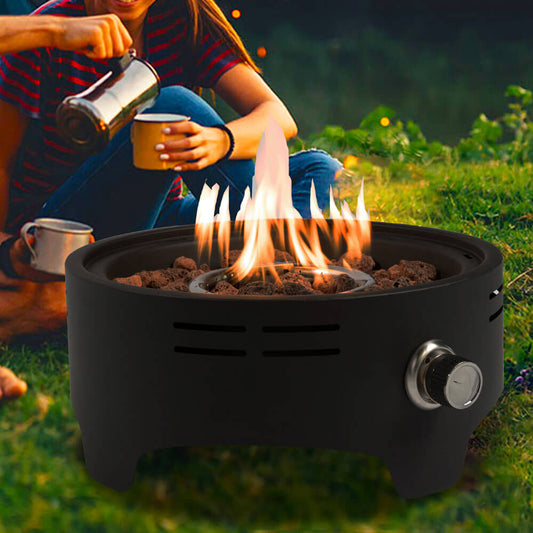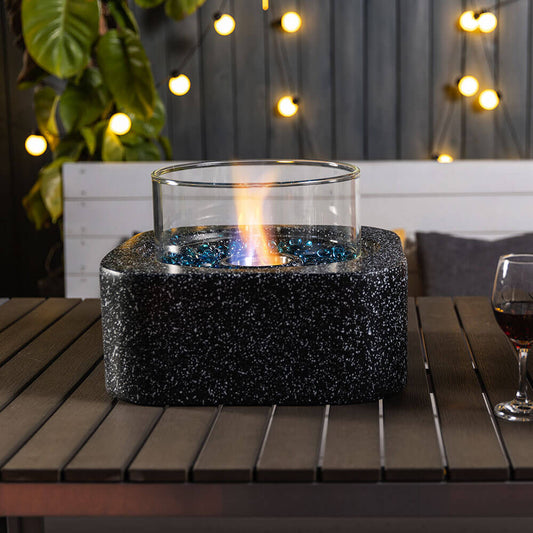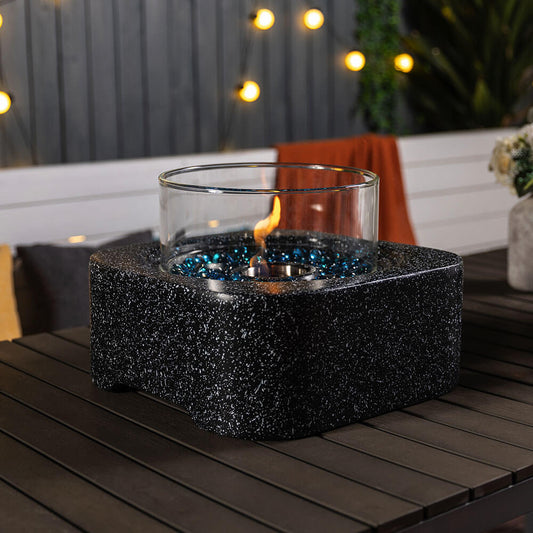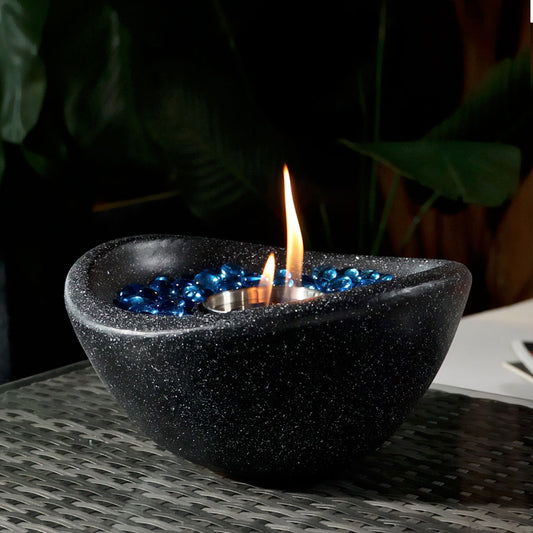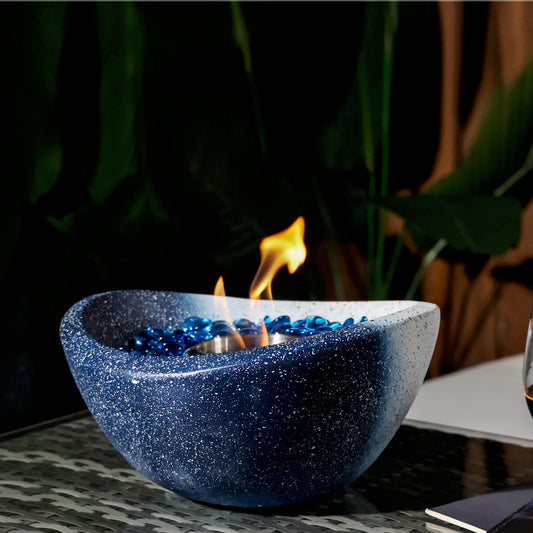
Imagine a serene summer evening spent with loved ones gathered around your fire pit. The flames dance gracefully, their light reflecting beautifully off the shimmering fire glass, creating a mesmerizing ambiance. But as the night progresses, a gusty breeze disrupts the tranquility, causing the flames to flicker erratically and diminishing the fire pit's charm.
While windy conditions are inevitable, they need not ruin your outdoor fire experience. This is where a wind guard, also known as a fire pit wind guard, comes into play. An essential accessory for any outdoor fire pit or fire table, a wind guard ensures consistent flame performance and enhances both the functionality and aesthetics of your fire feature.
What is a Wind Guard?
A wind guard is a heat-resistant glass barrier that encircles the burner pan of your fire pit or fire table. Its primary function is to shield the flames from wind, which can otherwise disrupt the flame's stability and reduce the fire feature's efficiency. By blocking direct wind exposure, a wind guard ensures a steady, visually appealing flame, allowing you to enjoy your fire pit to its fullest potential.
Key Benefits of a Wind Guard
Steady Flame Performance: Even a light breeze can cause flames to flicker and burn unevenly. A wind guard mitigates this issue by creating a protective barrier, ensuring a consistent and robust flame that enhances the ambiance of your outdoor space.
Fuel Efficiency: Unprotected flames require more gas or propane to counteract the effects of wind, leading to higher fuel consumption. A wind guard reduces this inefficiency by maintaining a lower, steadier flame, thereby conserving fuel and saving you money.
Aesthetic Enhancement: Beyond its functional benefits, a wind guard adds a touch of contemporary elegance to your fire pit. Its sleek design elevates the overall appearance of your fire feature, transforming it from ordinary to extraordinary.
Cleaner Burning: Wind can cause incomplete combustion, resulting in soot buildup on fire glass and the burner pan. A wind guard ensures a cleaner burn by protecting the flame from wind interference, allowing the gas to burn more efficiently.
Added Safety: A wind guard acts as a protective barrier between the flames and onlookers, reducing the risk of accidental burns. It also prevents debris from blowing into the fire pit, minimizing potential fire hazards.
Important Safety Note: Due to its proximity to the flames, a wind guard becomes extremely hot during use. Avoid touching it while the fire is lit or immediately after extinguishing it. Educate family members and guests, especially children, to maintain a safe distance from the guard.
Anatomy of a Wind Guard
Wind guards are typically constructed from standard tempered glass, which can withstand consistent temperatures of up to 500°F. While ceramic-based glass options capable of enduring higher temperatures (up to 1,600°F) are available, they are more expensive and generally unnecessary for outdoor fire pits.
The glass panels are held together using metal fasteners, usually made of aluminum or chrome. Aluminum is the preferred material due to its durability and resistance to rust. Corner fasteners are commonly used to secure the glass panels, with extension fasteners required for larger fire pits to connect multiple pieces of glass seamlessly.
Selecting the Right Wind Guard
To ensure optimal performance and aesthetics, the wind guard should be appropriately sized for your fire pit. Here are some guidelines:
Dimensions: The wind guard should extend 2–3 inches beyond the burner pan on all sides. For example, a 24" x 8" burner pan would require a wind guard measuring approximately 29" x 13".
Height: The ideal height for a wind guard is 6–8 inches. A 6-inch height is sufficient for square or rectangular fire pits, while round fire pits often look best with an 8-inch guard for a balanced appearance.
Installation Tips
Installing a wind guard is a straightforward process, but following these tips can ensure a smooth setup:
Assemble Upside-Down: Begin by assembling the wind guard upside-down on a flat surface. This makes it easier to align the clamps and attach the feet.
Circular Guards: For round wind guards, loosely assemble the pieces upside-down and tighten the screws gradually to ensure a secure fit.
Follow Instructions: Always refer to the manufacturer’s instructions and seek customer support if needed.
Building a Custom Wind Guard
For those with unique or custom-designed fire features, building a wind guard from scratch is an option. Here’s how to proceed:
Glass Selection: Use 5mm thick clear tempered glass with a flat grind edge for safety and durability. If metric sizes are unavailable, 3/16" tempered glass is a suitable alternative.
Hardware: Purchase mounting hardware from a specialty supplier and ensure it is compatible with the glass thickness.
Measurements: Add 4–5 inches to the burner pan dimensions to determine the wind guard size. Account for the additional space taken up by clamps when cutting the glass panels.
Note: While DIY wind guards offer customization, they are often more expensive than pre-made options due to the labor-intensive process of cutting and tempering the glass.
Conclusion
A wind guard is an indispensable accessory for any outdoor fire pit or fire table. It not only protects the flames from wind interference but also enhances fuel efficiency, safety, and aesthetic appeal. Whether you opt for a pre-made guard or build a custom one, this simple addition ensures that your fire feature remains a stunning centerpiece of your outdoor space, regardless of the weather. Invest in a wind guard today and enjoy uninterrupted, mesmerizing flames for years to come.
